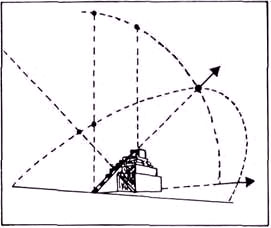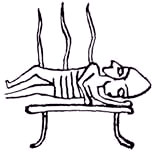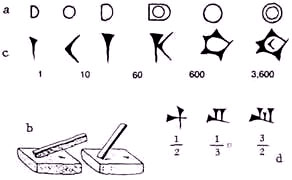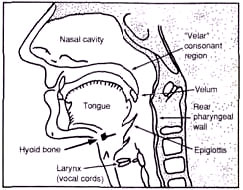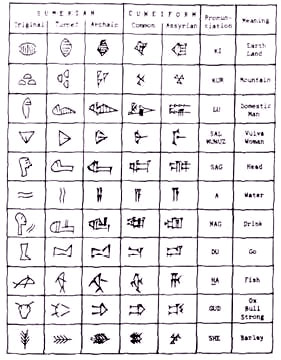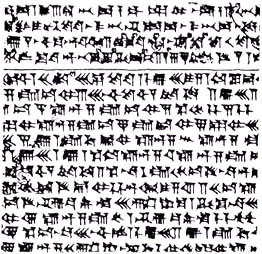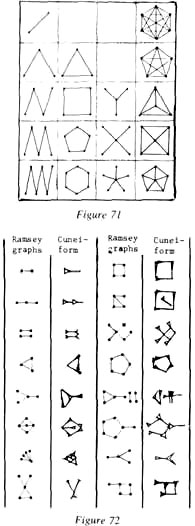|
10 - WHEN WISDOM WAS LOWERED FROM HEAVEN
After listing the other antediluvial rulers and cities, the text states that “then the Flood swept over the Earth.” And it continues:
From then on, the lists take us into historical times.
Various aspects of an organized and orderly society were incorporated into the concept of kingship, first and foremost among them the need for justice. A king was required to be “righteous” and to promulgate and uphold the laws, for Sumerian society was one that lived by the law. Many have learnt in school of the Babylonian king Hammurabi and his famous law code, dating back to the second millenium B.C.; but at least two thousand years before him Sumerian kings had already promulgated codes of law. The difference was that Hammurabi’s was a code of crime and punishment: if you do this, your punishment will be that.
The Sumerian law codes, on the other hand, were codes of just behavior; they stated that “you should not take away a widow’s donkey” or delay the wages of a day laborer. The Bible’s Ten Commandments were, like the Sumerian codes, not a list of punishments but a code of what is right to do and what is wrong and should not be done. The laws were upheld by a judicial administration. It is from Sumer that we have inherited the concept of judges, juries, witnesses, and contracts. The unit of society we call the “family,” based on a contractual marriage, was instituted in Sumer; so were rules and customs of succession, of adoption, of the rights of widows.
The rule of law was also applied to economic activities: exchange based on contracts, rules for employment, wages, and—how else—taxation. We know much of Sumer’s foreign trade, for example, because there had been a customs station at a city called Drehem where meticulous records were kept of all commercial movements of goods and animals. All that and more came under the umbrella of “Kingship.” As the sons and grandchildren of Enlil entered the stage of relations between Man and his gods, the functions of kingship and the supervision of kings were gradually handed over to them, and Enlil as the All Beneficent became a cherished memory. But to this day what we call a “civilized society” still owes its foundations to the time when “kingship was lowered from heaven.”
These brief statements disclose considerable information. The first subject Enmeduranki was taught, the knowledge of “oil and water,” concerned medicine. In Sumerian times physicians were called either an A.ZU or a IA.ZU, meaning “One who knows water” and “One who knows oil,” and the difference was the method by which they administered medicaments: mixed and drunk down with water, or mixed with oil and administered by an enema.
Next, Enmeduranki was given a “divine,” or celestial, tablet on which were engraved the “secrets of Heaven and Earth”—information about the planets and the Solar System and the visible constellations of stars, as well as knowledge about “Earth sciences”—geography, geology, geometry and—since the Enuma elish was incorporated into the temple rituals on New Year’s Eve—cosmogony and evolution. And, to be able to understand all that—the third subject, mathematics: “calculations with numbers.”
In Genesis the story of the antediluvial patriarch called Enoch is summed up in the statement that he did not die but was taken up to the Lord when he was 365 years old (a number that corresponds to the number of days in a year); but considerably more information about Enoch is provided in the Book of Enoch (of which several renderings have been found), which was not made part of the Bible.
In it the knowledge imparted by angels to Enoch is described in much detail; it included mining and metallurgy and the secrets of the Lower World, geography and the way Earth is watered, astronomy and the laws governing celestial motions, how to calculate the calendar, knowledge of plants and flowers and foods and so on—all shown to Enoch in special books and on “heavenly tablets.” The biblical Book of Proverbs devotes a good deal of its teachings to Man’s need for Wisdom and to the realization that it is granted by God only to the righteous, “for it is the Lord who giveth wisdom.” The many secrets of Heaven and Earth that Wisdom encompasses are highlighted in an Ode to Wisdom found in chapter 8 of Proverbs. The Book of Job likewise extols the virtues of Wisdom and all the abundance Man can obtain by it, but pointedly asks:
To which the answer is. “It is God who understands the way thereof”; the Hebrew word translated “God ” is Elohim, the plural term first used in the creation tales. It is certain that the inspiration for these two biblical books, if not their actual source, was Sumerian and Akkadian texts of proverbs and of the Sumerian equivalent of the Book of Job; the latter, interestingly, was titled “I Will Praise the Lord of Wisdom.”
Nevertheless, this “fear of crossing” (a nice play on words, since Nibiru’s name meant “Planet of the Crossing” . . .) in no way negates the fact that modem astronomy owes to the Sumerians (and through them, to the Anunnaki) the basic concept of a spherical astronomy with all its technicalities; the concept of an ecliptic as the belt around the Sun in which the planets orbit; the grouping of stars into constellations; the grouping of the constellations seen in the ecliptic into the Houses of the Zodiac; and the application of the number 12 to these constellations, to the months of the year, and to other celestial, or “divine,” matters.
This emphasis on the number 12 can be traced to the fact that the Solar System has twelve members, and each leading Anunnaki was assigned a celestial counterpart, forming a pantheon of twelve “Olympians” who were also each assigned a constellation and a month. Astrologers certainly owe much to these celestial divisions, since in the planet Nibiru astrologers find the twelfth member of the Solar System that they have been missing for so long.
Based on the alignment of its start with the spring equinox in the zodiac of Taurus, scholars have concluded that this calendar was instituted at the beginning of the fourth millennium B.C. Indeed, the very concept of a calendar that is coordinated with the Earth-Sun occurrences of the equinoxes (the time the Sun crosses the equator and day and night are equal) or, alternatively, with the solstices (when the Sun appears to have reached its farthest point north or south)—concepts that are found in all calendars in both the Old World and the New World—come to us from Sumer.
The Jewish calendar, as I have repeatedly pointed out in books and articles, still adheres to the calendar of Nippur not only in its form and structure but also in its count of years. In A.D. 1990 the Jewish calendar counts the year 5750; and it is not from “the creation of the world,” as the explanation has been, but from the start of the calendar of Nippur in 3760 B.C. It was in that year, I have suggested in The Lost Realms, that Anu, Nibiru’s king, came to Earth on a state visit. His name, AN in Sumerian and Anu in Akkadian, meant “heaven,” “The Heavenly One.” and was a component of numerous astronomical terms, such as AN.UR (“celestial horizon”) and AN.PA (“point of zenith”), as well as being a component of the name “Anunnaki,” “Those Who From Heaven to Earth Came.”
Archaic Chinese, whose syllables were written and pronounced in a manner that reveals their Sumerian origin, used for example the term kuan to denote a temple that served as an observatory; the Sumerian kernel of the term, KU.AN, had meant “opening to the heavens.” (The Sumerian origin of Chinese astronomy and astrology was discussed by me in the article “The Roots of Astrology,” which appeared in the February 1985 issue of East-West Journal). Undoubtedly, the Latin annum (“year”) from which the French annee (“year”), the English annual (“yearly”), and so on stem from the time when the calendar and the count of years began with the state visit of AN.
Figure 63
That the Anunnaki could achieve that feat (at least in so far as their own were concerned). Figure 64 is clear from a text titled “The Descent of Inanna to the Lower World,” where she was put to death by her own sister. When her father appealed to Enki to revive the goddess, Enki directed at the corpse “that which pulsates” and “that which radiates” and brought her back to life. A Mesopotamian depiction of a patient on a hospital table shows him receiving radiation treatment (Fig. 64).
Fig. 64
Putting aside the ability to revive the dead (which is mentioned as fact in the Bible), it is certain that the teaching of anatomy and medicine was part of priestly training, as stated in the Enmeduranki text. That the tradition continued into later times is clear from Leviticus, one of the Five Books of Moses, which contains extensive instructions by Yahweh to the Israelite priests in matters of health, medical prognosis, treatment and hygiene. The dietary commandments regarding “appropriate” (kosher) and non-appropriate foods undoubtedly stemmed from health and hygienic considerations rather than from religious observance; and many believe that the important requirement of circumcision was also rooted in medical reasons.
That the Elohim were the source of these teachings should come as no surprise when we recall the medical, anatomical, and genetic feats of Enki and Ninti. Basic to the science of astronomy and the workings of the calendar, as well as to commerce and economic activity, was the knowledge of mathematics—the “making of calculations with numbers,” in the words of the Enmeduranki text.
The Sumerian numbers system is called sexagesimal, meaning “base 60.” The count ran from 1 to 60, as we now do with 1 to 100. But then, where we say “two hundred,” the Sumerians said (or wrote) “2 gesh,” meaning 2 x 60, which equaled 120. When in their calculations the text said “take half” or “take one-third,” the meaning was one-half of 60 = 30, one-third of 60 = 20. This might seem to us, reared on the decimal system (“times 10”), which is geared to the number of fingers on our hands, cumbersome and complicated; but to a mathematician, the sexagesimal system is a delight. The number 10 is divisible by very few other whole numbers (by 2 and 5 only, to be precise).
The number 100 is divisible only by 2, 4, 5, 10, 20, 25, and 50. But 60 is divisible by 2, 3, 4, 5, 6, 10, 12, 15, 20, and 30. Inasmuch as we have inherited the Sumerian 12 in our counting of the daily hours, 60 in our counting of time (60 seconds in a minute, 60 minutes in an hour), and 360 in geometry (360 degrees in a circle), the sexagesimal system is still the only perfect one in the celestial sciences, in time reckoning, and in geometry (where a triangle has angles adding up to 180 degrees and a square’s angles add up to 360 degrees).
In both theoretical and applied geometry (such as the measuring of field areas) this system made it possible to calculate the areas of diverse and complex shapes (Fig, 65), the volumes of vessels of all kinds (needed to hold grains or oil or wine), the length of canals, or the distances between planets.
Figure 65
With the introduction of cuneiform (“wedge-shaped”) writing, in which scribes used a wedge-shaped stylus (Fig. 66b), the numerals were also written in wedge-shaped signs (Fig. 66c). Other cuneiform signs denoted fractions or multiples (Fig. 66d); together with combination signs that instructed the calculator to add, subtract, divide, or multiply, problems in arithmetic and algebra that would baffle many of today’s students were correctly solved. These problems included the squaring, cubing, or finding the square root of numbers.
As shown by F. Thureau-Dangin in Textes mathematiques Babyloniens, the ancients followed prescribed formulas, with two or even three unknowns, that are still in use today. Although dubbed “sexagesimal,” the Sumerian system of numeration and mathematics was in reality not simply based on the number 60 but on a combination of 6 and 10. While in the decimal system each step up is accomplished by multiplying the previous sum by 10 (Fig. 67a), in the Sumerian system the numbers increased by alternate multiplications: once by 10, then by 6, then by 10, then again by 6 (Fig. 67b).
This method has puzzled today’s scholars. The decimal system is obviously geared to the ten digits of the human hands (as the numbers, too, are still called), so the 10 in the Sumerian system can be understood; but where did the 6 come from, and why?
Figure 67
ready-made calculations. Surprisingly, however, they did not run from smaller numbers up (like 1, 10, 60, etc.) but ran down, starting from a number that can only be described as astronomical: 12,960,000.
An example quoted by Th.G. Pinches (Some Mathematical Tablets of the British Museum) began with the following lines at the top:
...and continued all the way down through “its 80th part 180000” to the 400th part “[which is] 32400.”
Other tablets carried the procedure down to the 16,000th part (equals 810), and there is no doubt that this series continued downward to 60, the 216,000th part of the initial number 12,960,000. H. V. Hilprecht (The Babylonian Expedition of the University of Pennsylvania), after studying thousands of mathematical tablets from the temple libraries of Nippur and Sippar and from the library of the Assyrian king Ashurbanipal in Nineveh, concluded that the number 12,960,000 was literally astronomical—that it stemmed from the phenomenon of Precession, which retards the zodiac constellation against which the Sun rises by a full House once in 2,160 years.
The complete circle of the twelve Houses, by which the Sun returns to its original background spot, thus takes 25,920 years; the number 12,960,000 represented five hundred such complete Precessional circles.
Now if we divide the number 12,960,000 by 2,160 (the number of years to achieve a shift from one zodiac House), the result is 6,000—a thousand times six. Six as a number of “days” is not unfamiliar—we came upon it at the beginning of Genesis and its six days of creation. Could the psalmist have seen the mathematical tablets in which he would have found the line listing “12,960,000 the 2160th part of which is a thousand times six”? It is indeed intriguing to find that the Psalms echo the numbers with which the Anunnaki had toyed.
Relating it all to the orbit of Nibiru, to its cycle of 3,600 Earth-years, to the precessional retardation of Earth in its orbit around the Sun—this is the secret of the Wisdom of Numbers that the Anunnaki lowered from Heaven to Earth. Before Man could “calculate with numbers,” the other two of the “three Rs”—reading and ‘riting—had to be mastered. We take it for granted that Man can speak, that we have languages by which to communicate to our fellow men (or clansmen).
But modern science has not held it so; in fact, until quite recently, the scientists dealing with speech and languages believed that “Talking Man” was a rather late phenomenon that may have been one reason the Cro-Magnons—who could speak and converse with each other—took over from the nonspeaking Neanderthals.
Eve says yes, the fruit of one tree was forbidden on penalty of death. But the Serpent assures the woman it is not so, and she and Adam eat of the forbidden fruit.
Yahweh calls out to Adam, “Where are you?” and the following exchange takes place:
This is quite a conversation. Not only the Deity can speak; Adam and Eve can also speak and understand the Deity’s language. So, in what language did they converse, for there must have been one (according to the Bible). If Eve was the First Mother, was there a First Language—a Mother Tongue? Again, scholars began by differing with the Bible. They assumed that language was a cultural heritage rather than an evolutionary trait. It was assumed that Man progressed from groans to meaningful shouts (on seeing prey or sensing danger) to rudimentary speech as he formed clans. From words and syllables, languages were born—many languages, arising simultaneously as clans and tribes formed.
But this very grouping held the obstacle to the recognition of a Mother Tongue, because it was based on the notion that totally different and unrelated groups of languages developed independently in different “core zones” from which migrants carried their tongues to other lands. Attempts to show that there are apparent word and meaning similarities even between distant groups, such as the writings in the nineteenth century by the Reverend Charles Foster (The One Primeval Language, in which he pointed to the Mesopotamian precursors of Hebrew) were dismissed as no more than a theologian’s attempt to elevate the status of the Bible’s language, Hebrew.
As the dates of ten thousand and twelve thousand years ago were being considered, the search for points of similarity, speeded up by computers, led scholars to the discovery of protolanguages and thus to larger and less numerous groupings. Searching for an early affiliation for the Slavic languages, Soviet scientists under the leadership of Vladislav Illich-Svitych and Aaron Dolgopolsky suggested, in the 1960s, a proto-language they termed Nostratic (from the Latin “Our Language”) as the core of most European (including Slavic) languages.
Later on they presented evidence for a second such proto-language, which they termed Dene-Caucasian, as the core tongue of the Far Eastern languages. Both began, they estimated from linguistic mutations, about twelve thousand years ago. In the United States, Joseph Greenberg of Stanford University and his colleague Merritt Ruhlen suggested a third proto-language, Amerind.
When a time of twenty thousand years or even thirty thousand years ago was suggested, Joseph Greenberg created a sensation when he demonstrated in 1987 (Language in the Americas) that the hundreds of tongues in the New World could be grouped into just three families, which he termed Eskimo-Aleut, Na-Dene, and Amerind. The greater significance of his conclusions was that these three in turn were brought to the Americas by migrants from Africa, Europe, Asia, and the Pacific and thus in effect were not true proto-languages but offshoots of Old World ones.
The protolanguage he called “Na-Dene,” Greenberg suggested, was related to the Dene-Caucasian group of the Soviet scholars. This family, Merritt Ruhlen wrote in Natural History (March 1987), appears to be “genetically closest” to the group of languages that include “the extinct languages Etruscan and Sumerian.” Eskimo-Aleut, he wrote, is most closely related to the Indo-European languages. (Readers wishing to know more about the earliest arrivals in the Americas may want to read The Lost Realms, Book IV of “The Earth Chronicles” series).
Figure 68
If so, how could Indo-European, whose origins are traceable to only a few thousand years ago, be given such a prominent position on the language tree? Less inhibited about lowering the claims for Indo-European than their Western colleagues, Soviet scholars continued to search audaciously for a protoproto language. Spearheading the search for a Mother Tongue have been Aaron Dolgopolsky, now at Haifa University in Israel, and Vitaly Shevoroshkin, now at the University of Michigan. It was primarily on the latter’s initiative that a “breakthrough” conference was held at the University of Michigan in November 1988. Titled “Language and Prehistory,” the conference brought together, from seven countries, more than forty scholars from the fields of linguistics, anthropology, archaeology, and genetics. The consensus was that there had been a “mono-genesis” of human languages—a Mother Tongue in a “proto-proto-proto stage” at a time about 100,000 years ago.
And Allan Wilson, who had participated in the genetic research leading to the ”One-Mother-of-All” conclusion, put speech back in the mouth of “Eve”:
Well, to Eve and Adam, according to the Bible. And so we arrive at the last of the Rs—writing. It is now believed that many of the shapes and symbols found in Ice Age caves in Europe, attributed to Cro-Magnons living during the period of between twenty thousand and thirty thousand years ago, represent crude pictographs—“picture writing.”
Undoubtedly, Man learned to write long after he began to speak. The Mesopotamian texts insist that there was writing before the Deluge, and there is no reason to disbelieve this. But the first writing discovered in modern times is the early Sumerian script which was pictographic. It took but a few centuries for this script to evolve into the cuneiform script (Fig. 69), which was the means of writing in all the ancient languages of Asia until it was finally replaced, millennia later, by the alphabet.
But modern science reveals that there was more than some logical order to creating such a diversity of signs.
Figure 69
Applied to games and riddles as well as to science and architecture, the theory offered by Ramsey made it possible to show, for example, that when six points representing six people are joined by either red lines (connecting any two who know each other) or blue lines (connecting any two who are strangers), the result will always be either a red or a blue triangle.
Figure 70
The almost one hundred signs, only partly illustrated here, are simple graphs based on no more than a dozen Ramsey Numbers. So, if Enki or his daughter Nidaba, the Sumerian “goddess of writing,” had known as much as Frank Ramsey, they must have had no problem in devising for the Sumerian scribes a mathematically perfect system of cuneiform signs. “I will greatly bless thee, and I will exceedingly multiply thy seed as the stars of the heavens,” Yahweh told Abraham.
And with this single verse, several of the elements of the knowledge that was lowered from heaven were expressed: speech, astronomy, and the “counting with numbers.” Modern science is well on its way to corroborating all that.
THE FRUITS OF EDEN
What was the Garden of Eden, remembered in the Bible for its variety of vegetation and as the place where still unnamed animals were shown to Adam?
Modern
science confirms the grape’s antiquity; science has also discovered
that besides being a nourishing food, the grape’s wine is a strong
gastrointestinal medicine. So, when Noah drank the wine (in excess),
he was, in a manner of speaking, taking his medicine.
|
